Blind But Still Can See
ktuli — Mon, 04/07/2014 - 19:50
Ok... time for a bit of a photo essay.
Saturday evening, Anya and I took a walk around the property. The initial goal was to see if we could sneak up on some wood ducks; we've been seeing them on the pond and bog with regularity and I've slowly been trying to get closer and closer. Well, to keep a long story slightly shorter, suffice to say that I wasn't successful.
However, as we walked back along the pond, we noticed a bird that we hadn't seen before. It was smaller and would completely dive under the water and disappear for a bit. Like all the birds so far, it was skittish, but like most diving birds I've experienced, its first instinct was to simply dive and swim further away rather that fly off. So with some patience, I managed to get some shots...
Technical Data: Canon EOS 7D, Sigma 150-500mm f/5-6.3 APO DG OS HSM at 500mm, 1/1000 sec at f/6.3. OS Mode 1. ISO 1250. RAW conversion and cropped in Adobe Camera Raw.
That is a Pied-Billed Grebe (Podilymbus podiceps). It isn't the flashiest of birds, but its diminutive size makes it somewhat cute, as does its mannerisms. I enjoyed watching it swim around on the pond, diving for fish, bugs, and other such morsels.
We sat along the bank quietly for a while, partially hidden by some tree branches and bushes. We saw a pair of Hooded Mergansers, but they didn't come in close enough for any shots, and eventually flew off.
As we sat there, we learned that our original theory that we have only a lone hermit male beaver living on our pond is incorrect as we saw two beavers out and swimming around at the same time. I don't know if they're a pair, but it will be something to keep an eye on in the future. I didn't manage to get any shots of the two of them together, but I did get some when this one hauled its surprisingly fat (considering I would have figured it would have been hibernating and lost some weight) hulk up on the shore where it proceeded to clean its fur and take care of some apparently irritating itches.
Technical Data: Canon EOS 7D, Sigma 150-500mm f/5-6.3 APO DG OS HSM at 500mm, 1/320 sec at f/6.3. OS Mode 1. ISO 1250. RAW conversion and cropped in Adobe Camera Raw.
It sure looks like that scratching is getting the job done, but check out that massive webbed hind foot, that ridiculously huge (and orange) tooth, and that big flat tail. You might also notice that the lighting for this photo is coming from the side and not from above. The sun was setting, and I was losing light fast.
Around that time, the batteries on my camera were dying and Anya offered to go get my spares. I stayed there and continued shooting while she went and got fresh batteries and another surprise.
For Christmas, Anya bought me a portable pop-up blind, so when she returned with that slung over her shoulder, it was a very nice surprise. We took a few minutes and set it up and climbed inside. From there we waited and watched to see what other visitors might come to the pond to take shelter for the night. Unfortunately, the light faded too quickly, and nothing came into a good spot to take any photos.
Finally, we called it a night and decided to head in. Fortunately, however, that isn't the end of the story. Research has taught me that the other best time for photography from a blind is at sunrise, so we made plans to wake up early the next morning and make our way to the blind before the sun came up.
What we didn't plan on was the temperatures dropping to the low 20s!!!
So the next morning, with heavy coats, hats, and gloves, we headed out the door carrying some folding chairs, some camera equipment, and mugs of hot tea (mine was of course in my trusty Canon lens mug). The grass was frosty, and the pond had a nice layer of fog rising from it. It certainly was a surreal experience...
Technical Data: Canon EOS 7D, Canon EF-S 18-55mm f/3.5-5.6 II at 18mm, 1/250 sec at f/5.6. ISO 2500. RAW processing Adobe Camera Raw.
After a big of waiting, and listening to the geese honking, the real stars of the show appeared. I believe Anya counted something like 19 or 20 Wood Ducks (Aix sponsa). These have to be one of the most stunning birds in North America, and I'll be honest and say that these photos don't even come close to doing them justice! But it is still a treat to be getting these, and I'll definitely be working on improving them next time...
Technical Data: Canon EOS 7D, Sigma 150-500mm f/5-6.3 APO DG OS HSM at 500mm, 1/200 sec at f/6.3. OS Mode 1. ISO 1250. RAW conversion and cropped in Adobe Camera Raw.
They just don't look real. Their colors (which aren't showing up so well here) are just amazing, and the crisp lines between them just defies any expectations. Even the females (the fourth from the right below) have a simple beauty about them with their white rimmed eyes and blue patches on their wings.
Technical Data: Canon EOS 7D, Sigma 150-500mm f/5-6.3 APO DG OS HSM at 500mm, 1/200 sec at f/6.3. OS Mode 1. ISO 1250. RAW conversion and cropped in Adobe Camera Raw.
After a while, the little Pied-Billed Grebe returned, and with the blind didn't mind getting closer for some better photos...
Technical Data: Canon EOS 7D, Sigma 150-500mm f/5-6.3 APO DG OS HSM at 500mm, 1/250 sec at f/6.3. OS Mode 1. ISO 800. RAW conversion and cropped in Adobe Camera Raw.
Eventually, the sun did come up and cast a beautiful golden glow on everything, but by then, all the wood ducks and the grebe had moved away from in front of the blind and all that was left were the geese.
Since they'd hung around all day, and the calm waters were producing such beautiful reflections, I figured why not! (I have a better shot to share later, but for now, here's one of them)
Technical Data: Canon EOS 7D, Sigma 150-500mm f/5-6.3 APO DG OS HSM at 500mm, 1/800 sec at f/6.3. OS Mode 1. ISO 800. RAW conversion and cropped in Adobe Camera Raw.
Finally, when all was said and done, we headed back in to warm up. After a hearty pancake breakfast, we headed back out where the temperature had shot right up to about 50F, and we spent the rest of the day working on completing the installation of two of our three wood duck boxes (well, one of them is for hooded mergansers, but you get the idea). That required some spray painting camouflage on the predator baffles we'd built out of PVC pipe, and working out some unforeseen situations. Eventually, we did get two of them installed. Here's a photo of one of them...
Technical Data: Canon EOS 7D, Sigma 150-500mm f/5-6.3 APO DG OS HSM at 150mm, 1/320 sec at f/5.6. OS Mode 1. ISO 800. RAW conversion and cropped in Adobe Camera Raw.
You can just barely see the camo covered baffle, huh?
Anyway, that was my weekend. How about you?
Oh, and I'll definitely be back with more photos from the pond - both from this outing and many more to come I'm sure.
- Bill

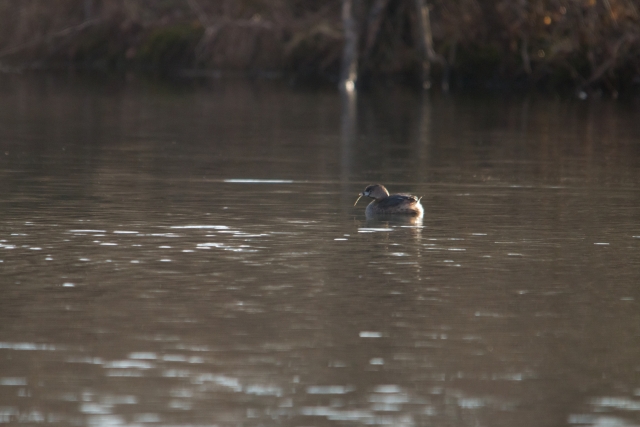
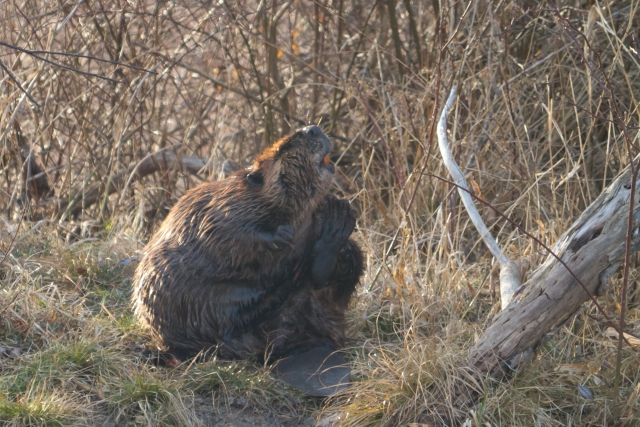
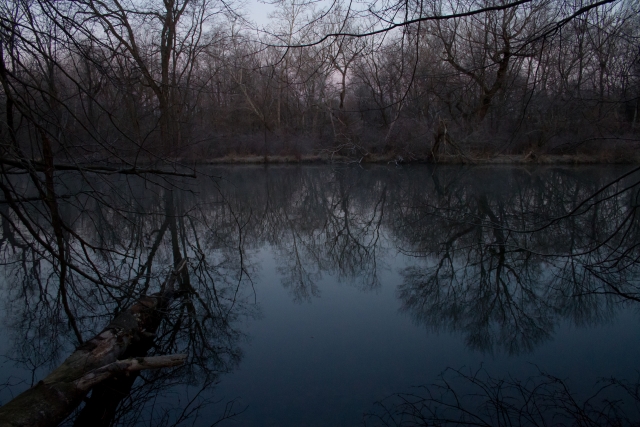
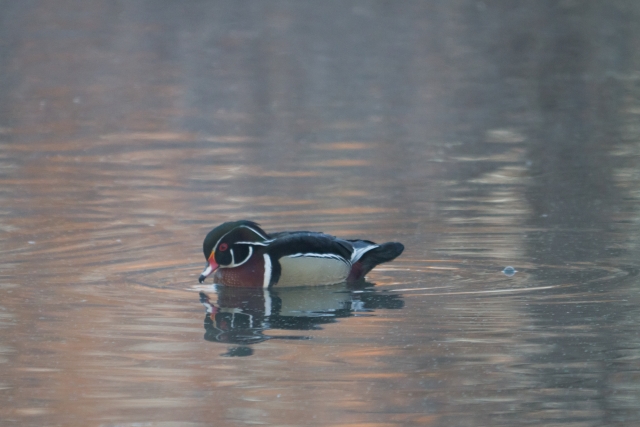
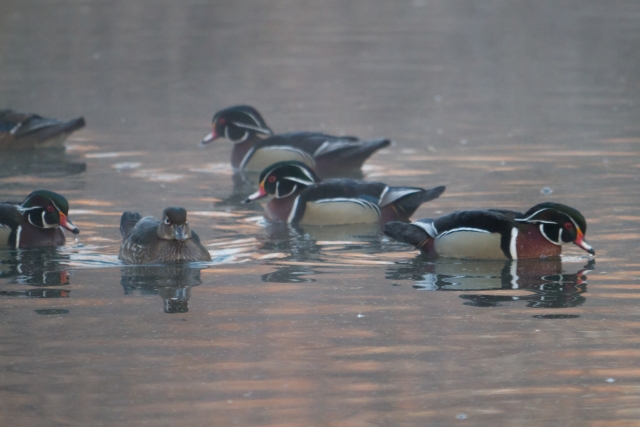
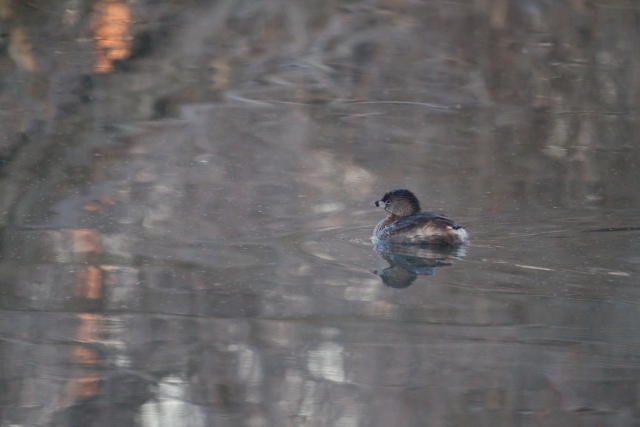
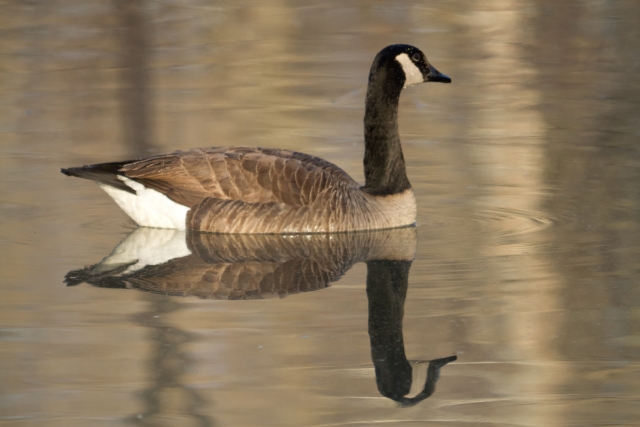
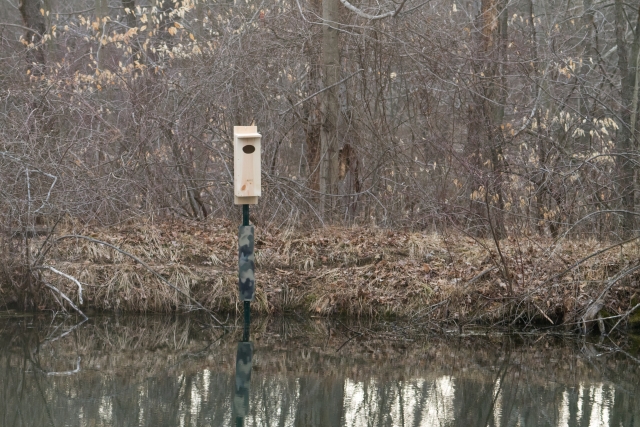


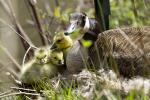
Post new comment